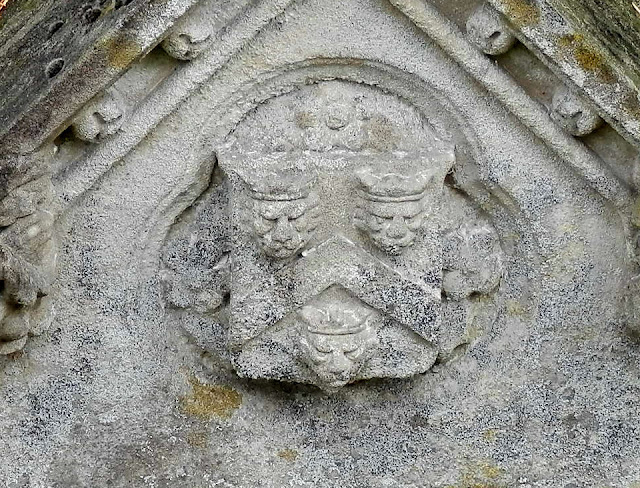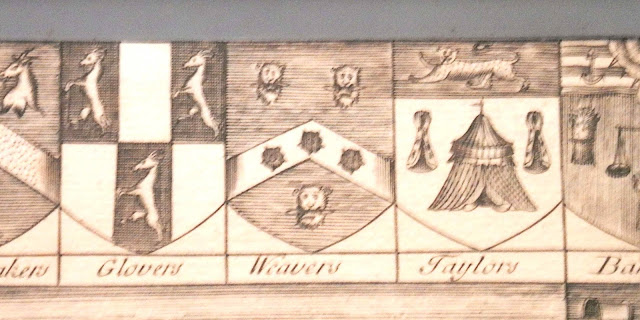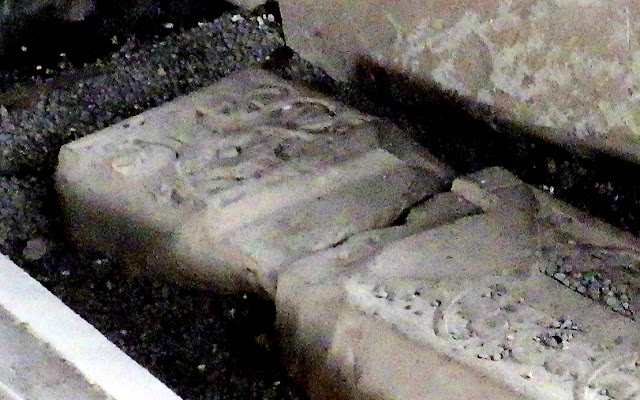You'll find three leopards' heads in a triangular shape used in heraldry all over the world, though only in Shropshire can they rightfully be called loggerheads.
Here's an example: this is a photo of some heraldic arms on a gravestone at Hixon St Peter's in Staffordshire. The grave seems to be that of a 19th-century local dignitary, Enoch Broad. I haven't been able to trace whether these are his personal arms or simply that of the family - or indeed of Hixon itself (maybe).
It's also difficult, because the stone is so worn, to identify the ring round the creatures' heads as a simple circlet, or even a coronet.
You'd think the chevron would be a helpful piece of evidence, but.... not so far.
+
To comment on this post, just use the Comments field down this page or email us direct.
To get an email alert into your inbox every time we make a new post (about once a week), just click 'Subscribe & Follow' (at the top of the column to the right on this page) and just fill in the form













